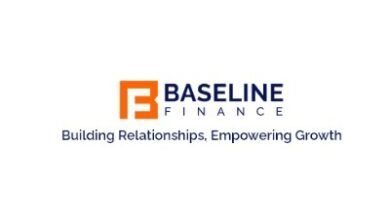
(RNS) — State officials in the South have recently reignited debates over teaching religion in public schools, with Oklahoma’s superintendent of schools issuing a mandate for schools to teach the Bible and Louisiana passing a law requiring schools to display the Ten Commandments.
The push is ultimately aimed at prompting the newly conservative majority on the U.S. Supreme Court to overturn a 1980 ruling on a similar law in Kentucky. Their argument is that the Bible is a historical text as well as a religious one and should not be disqualified any more than founding documents that make references to God or a creator.
Referring to religious texts in terms of patriotism and history may prove effective in inserting them into classrooms. But the argument that they are like any other aspect of American culture could backfire, paving the way Christian texts and symbols to actually be treated that way.
As of now, Oklahoma’s rule stands, affecting all public schools in the state, though some districts are refusing to comply, and a federal judge delayed Louisiana’s measure after parents brought a lawsuit. Political analysts have portrayed both, meanwhile, as a culture war stunts — acts of political theater for a polarized election year.
But legal scholars have focused on the challenge these new directives pose for the separation of church and state, a policy contained in the U.S. Constitution’s establishment clause forbidding the government from establishing a religion. While warranted, this focus puts a lot of stock in that idea that the boundaries between church and state, public and private, religious and secular are clear. And this is where the unintended consequences could arise for the religious conservatives pushing the directives.
Louisiana’s bill, for example, places the Ten Commandments alongside the Mayflower Compact and the Northwest Ordinance, historical documents that also mention God or religious liberty. Ryan Walters, the Oklahoma state superintendent who issued the directive, suggests teaching one is no different from teaching the other.
But placing these documents in public schools alongside other historic yet obsolete documents may just make these biblical texts appear historical and obsolete too.

(Photo by Oscar Llerena/Flickr/Creative Commons)
One case that illustrates this point is Lynch v. Donnelly, a famous 1984 Supreme Court church-state case that concerned a Pawtucket, Rhode Island, Nativity scene that was included in a Christmas display on town property in a busy shopping area. The court ruled that the Nativity scene, or creche, could remain because it was deemed a “cultural” symbol that depicted the origins of a national holiday, calling it a “legitimate secular purpose.”
Justice Harry Blackmun, a Methodist who wrote the dissenting opinion, warned that the Nativity being seen as a secular item alongside Santa and Rudolph would backfire:
“The creche has been relegated to the role of a neutral harbinger of the holiday season, useful for commercial purposes but devoid of any inherent meaning and incapable of enhancing the religious tenor of a display of which it is an integral part. The city has its victory — but it is a Pyrrhic one indeed.”
Blackmun explained how placing baby Jesus next to Santa Claus ultimately contributed to the former being seen as a frivolous holiday character, like the latter. He also noted the culture war spirit of the mayor of Pawtucket:
“Not only does the Court’s resolution of this controversy make light of our precedents, but also, ironically, the majority does an injustice to the crèche and the message it manifests. While certain persons, including the Mayor of Pawtucket, undertook a crusade to ‘keep Christ’ in Christmas, the Court today has declared that presence virtually irrelevant.”
Blackmun recognized that the intent was indeed to inject what we might call a devotional or overtly religious message in the town square, even if that is not how it was defended.
In addition to alienating some non-Christians, Blackmun further explained, a municipally sponsored Nativity scene creates a situation in which devout Christians would feel “constrained in acknowledging [the Nativity’s] symbolic meaning.”
“Surely,” he concluded, “this is a misuse of a sacred symbol.”
The prohibition against putting visible symbols, in other words, may protect public schools, town squares and other “neutral” spaces from religious bias. But the prohibition also protected items seen as religious, constructing them as sacred and, in many ways, placing them beyond reproach or critique.
Mandating the use of biblical texts in public schools by presenting them as neutral, historical and secular will likely prove counterproductive to the goals of the officials intent on putting them in public schools.
By making the Ten Commandments and the Bible “merely historical” and part of “national culture,” these bills actually contribute to their secularization. The separation of church and state, on the other hand, creates ideas of sacred things that deserve to be set apart. These states may claim eventually a victory in the Supreme Court, but it could turn out to be an empty one, indeed.
(Lauren Horn Griffin is assistant professor in the department of philosophy and religious studies and the department of history at Louisiana State University. Her research and teaching focus on religion, politics, media and technology. The views expressed in this commentary do not necessarily reflect those of Religion News Service.)
Source link




